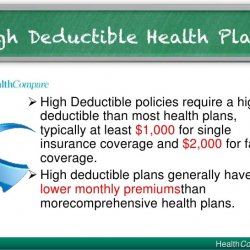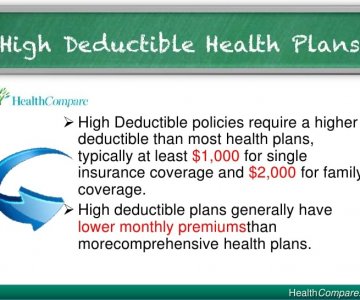some known questions about what does homeowners insurance cover

However, a state must guarantee it provides a smooth, streamlined registration process for households. Exceeding the abilities of the FFM in this area is a must-do for any state considering an SBM. Low-income people experience earnings volatility that can impact their eligibility for health protection and trigger them to "churn" frequently between programs. States can use the higher flexibility and authority that includes running an SBM to safeguard locals from protection gaps and losses. At a minimum, in preparing for an SBM, a state not integrating with Medicaid ought to work with the state Medicaid firm to establish close coordination between programs.
If a state instead continues to move cases to the Medicaid firm for a determination, it needs to prevent making individuals supply additional, unneeded information. For example it can make sure that electronic files the SBM transfers consist of information such as eligibility factors that the SBM has actually currently validated and confirmation documents that candidates have actually submitted. State health programs must ensure that their eligibility guidelines are aligned which different programs' notifications are coordinated in the language they utilize and their instructions to candidates, especially for notices informing individuals that they have been rejected or ended in one program however are most likely eligible for another.

States need to ensure the SBM call center workers are sufficiently trained in Medicaid and CHIP and ought to develop "warm hand-offs" so that when callers should be moved to another call center or firm, they are sent out directly to someone who can assist them. In basic, the state needs to supply a system that appears seamless across programs, even if it does not fully integrate its SBM with Medicaid and CHIP. Although reducing expenses is one factor states cite for switching to an SBM, cost savings are not ensured and, in any case, are not an adequate factor to carry out an SBM shift.
It could also constrain the SBM's spending plan in manner ins which restrict its capability to successfully serve state homeowners. Clearly, SBMs forming now can operate at a lower cost than those formed prior to 2014. The new SBMs chuckk can rent exchange platforms already developed by personal vendors, which is less costly than constructing their own innovation infrastructures. These suppliers use core exchange functions (the innovation platform plus client service features, consisting of the call center) at a lower expense than the quantity of user costs that a state's insurers pay to utilize the FFM. States hence see an opportunity to continue collecting the exact same quantity of user fees while using a few of those incomes for other functions.
As a beginning point, it is helpful to look at what a number of longstanding exchanges, consisting of the FFM, spend per enrollee each year, in addition to what numerous of the brand-new SBMs plan to spend. An evaluation of the budget documents for several "first-generation" SBMs, along with the FFM, reveals that it costs approximately $240 to $360 per market enrollee annually to run these exchanges. (See the Appendix (How much is mortgage insurance).) While comparing different exchanges' costs on an apples-to-apples basis is impossible due to differences in the policy decisions they have made, the populations they serve, and the functions they perform, this range offers a beneficial frame for taking a look at the budgets and policy choices of the second generation of SBMs.
Nevada, which simply transitioned to a complete state-based market for the 2020 strategy year, anticipates to spend about $13 million annually (about $172 per exchange enrollee) once it reaches a stable state, compared to about $19 million annually if the state continued paying user charges to federal government as an SBM on the federal platform. (See textbox, "Nevada's Shift to an SBM.") State officials in New Jersey, where insurers owed $50 million in user charges to the FFM in 2019, have stated they can use the very same total up to serve their locals better than the FFM has done and plan to move to an SBM for 2021.
State law needs the total user charges collected for the SBM to be held in a revolving trust that can be used only for start-up costs, exchange operations, outreach, registration, and "other methods of supporting the exchange (How much is dental insurance). How does health insurance work." In Pennsylvania, which prepares to launch a complete SBM in 2021, authorities have said it will cost just $30 million a year to run far less than the $98 million the state's individual-market insurers are anticipated to pay towards the user cost in 2020. Pennsylvania prepares to continue collecting the user fee at the same level but is proposing to use between $42 million and $66 million in 2021 to establish and fund a reinsurance program that will reduce unsubsidized premium costs beginning in 2021.

Some Known Factual Statements About How Much Is Renters Insurance
It remains to be seen whether the lower spending of the brand-new SBMs will suffice to deliver premium services to customers or to make significant improvements compared to the FFM (How much is home insurance). Compared to the first-generation SBMs, the new SBMs typically take on a narrower set of IT changes and functions, rather focusing on standard functions similar Check out here to what the FFM has actually achieved. Nevada's Silver State Exchange is the first "second-generation" exchange to be up and running as a full SBM, having actually just finished its first open registration duration in December 2019. The state's experience so far shows that this transition is a significant undertaking and can present unexpected obstacles.
The SBM met its timeline and budget plan targets, and the call center worked well, addressing a big volume of calls prior to and throughout the enrollment duration and dealing with 90 percent of issues in one call. Technical concerns arose with the eligibility and registration procedure but were identified and resolved rapidly, she stated. For instance, early on, nearly all consumers were flagged for what is generally an uncommon data-matching issue: when the SBM sent their information electronically to the federal information services wfg headquarters center (a mechanism for state and federal firms to exchange details for administering the ACA), the system discovered they might have other health coverage and asked to submit files to resolve the matter.
Fixing the coding and cleaning up the information solved the issue, and the affected consumers got accurate determinations. Another surprise Korbulic pointed out was that a significant number of people (about 21,000) were found disqualified for Medicaid and moved to the exchange. Some were recently using to Medicaid throughout open registration; others were previous Medicaid beneficiaries who had actually been found ineligible through Medicaid's regular redetermination process. Nevada opted to replicate the FFM's procedure for dealing with individuals who appear to be Medicaid eligible particularly, to send their case to the state Medicaid company to complete the determination. While this lowered the intricacy of the SBM transition, it can be a more fragmented procedure than having eligibility and enrollment procedures that are integrated with Medicaid and other health programs so that people who apply at the exchange and are Medicaid eligible can be straight registered.


Ingen kommentarer endnu